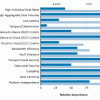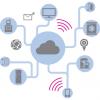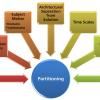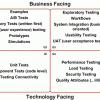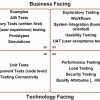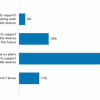Strategic advice to leverage new technologies
Technology is at the heart of nearly every enterprise, enabling new business models and strategies, and serving as the catalyst to industry convergence. Leveraging the right technology can improve business outcomes, providing intelligence and insights that help you make more informed and accurate decisions. From finding patterns in data through data science, to curating relevant insights with data analytics, to the predictive abilities and innumerable applications of AI, to solving challenging business problems with ML, NLP, and knowledge graphs, technology has brought decision-making to a more intelligent level. Keep pace with the technology trends, opportunities, applications, and real-world use cases that will move your organization closer to its transformation and business goals.
Recently Published
This article aims to help IoT practitioners understand the set of data-sharing requirements they must consider and guide them in the selection of viable technologies to satisfy those requirements.
In this article, Adam Justice reveals the Top 10 Design Issues you must keep in mind before jumping on the IoT bandwagon.
As a kid, I remember picking up one of my mom's House Beautiful magazines with a picture of Frank Lloyd Wright's "Fallingwaters" house on the cover. Right then I decided I wanted to be a "real" architect. I kept that goal in the back of my mind until I went off to college, and though I still wanted to be an architect, there were a couple of things that held me back. For one, the school that I was attending -- while having a strong engineering school -- didn't have an architecture department. That, and the fact that I couldn't draw.
In last week's Advisor (see "Using (and Abusing) the Agile Testing Quadrants, Part I"), we introduced my and Janet Gregory's version of the Agile testing quadrants (2008) based on Brian Marick's Agile testing matrix. In this Advisor, we will discuss how to use the quadrants to help your team build the right product in a sustainable way.
Best Practices in Partitioning Enterprise Architectures
The ways we partition EA affects both business and IT. So how do we decide the boundary around a segment or capability architecture? How do we deal with overlaps? And what costing, funding, and governance models help us manage the distinctions?
Models are useful for software development as well as for our daily lives. As new models are dreamed up, they're out in the world for other people to use, adapt, and evolve, or possibly try to destroy.
Models are useful for software development as well as for our daily lives. As new models are dreamed up, they're out in the world for other people to use, adapt, and evolve, or possibly try to destroy.
The Internet of Things (IoT) has generated considerable hype over the past few years. Probably nowhere has this hype been greater than when it comes to wearable devices like smart watches (Apple Watch), smart glasses (Google Glass), activity/fitness trackers (Misfit), and smart badges (for location tracking, security, etc.). This includes the use of wearables as general consumer electronic devices, as well as for their possible application in business scenarios designed to help workers perform their jobs.


